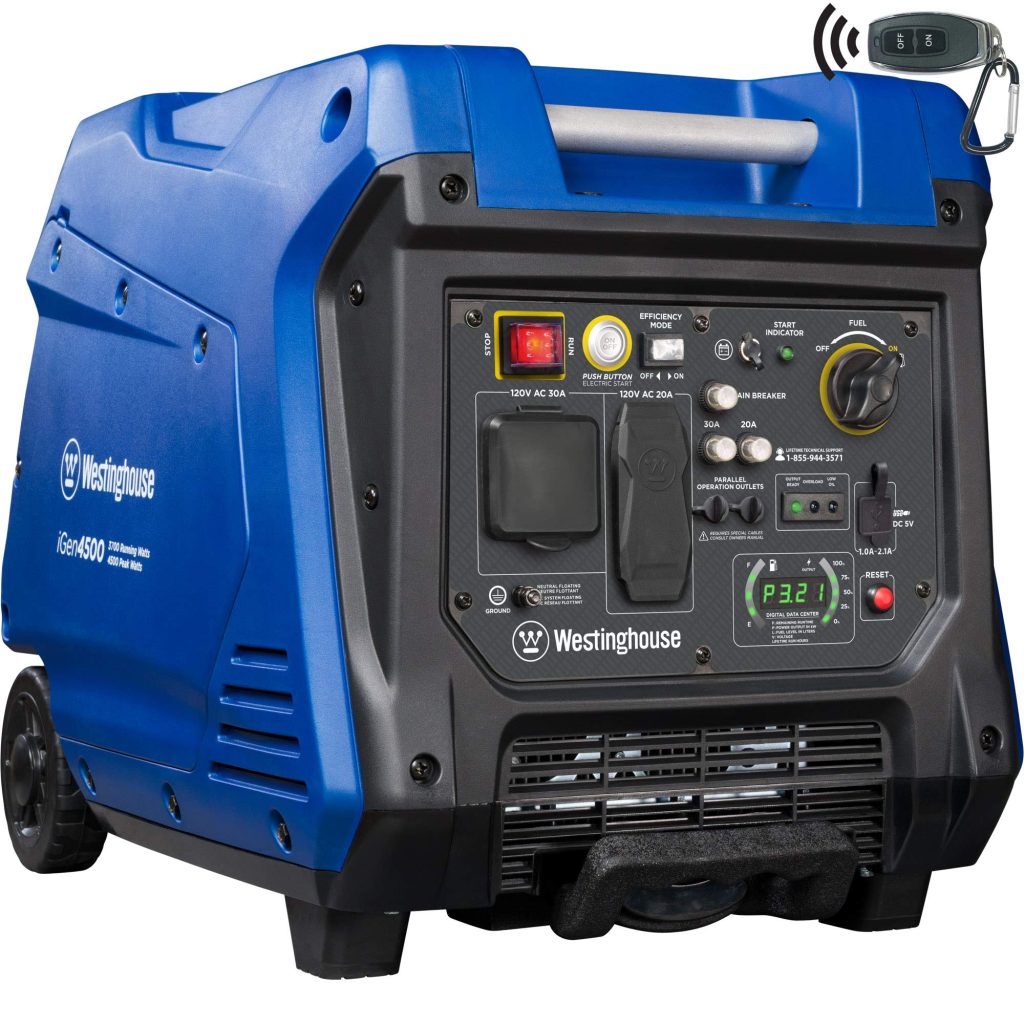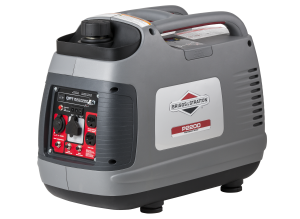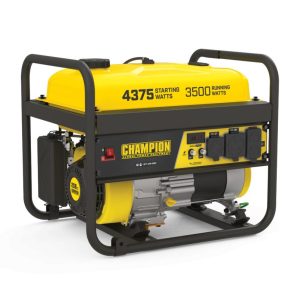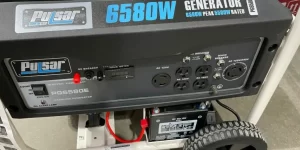12 Causes Of A Westinghouse Generator Starting Then Stopping
Although you manage to get the generator going, it continues shutting down. During a blackout, you won’t have access to the things you need if you don’t have a generator.
An empty fuel tank, clogged fuel filter, filthy carburetor, blocked fuel line, defective gas cap, dirty spark plug, broken ignition coil, low engine oil level, or old gas might cause a Westinghouse generator to start up and then shut down.
First, let the engine cool down completely, and then disconnect the spark plug wire. Read the Westinghouse handbook and be sure to implement its safety recommendations.

Before attempting any sort of diagnosis, repair, or operation on the equipment, be sure you have read and fully understand all of the safety precautions that have been included in the operator’s handbook. In the event that you lack the necessary expertise, experience, or physical ability to properly complete the repair, it is recommended that you seek the assistance of a professional.
Table of Contents
Start-Up Problems with Westinghouse Generators
A Westinghouse generator’s gas tank has run dry
A Westinghouse generator that uses gasoline won’t function if you don’t have any gasoline. This is probably old news to most of you. I simply point it up because it’s easy to get so worked up that you overlook the most basic explanation.
SOLUTION: You must ensure that the generator is set up on a level surface. If the generator’s fuel level is low or it’s completely depleted, you should refuel it.
Using Antiquated Westinghouse Generator Fuel
When generator gas sits for extended durations, varnish forms on the fuel and clogs the fuel system. The generator will splutter and may stop working if fuel pressure drops.
If you buy gas, run it and use it up within 30 days otherwise it will start to degrade and become less effective.
I realize how difficult it will be to really do this. Only during a power outage can you use the generator, and how long it lasts is anyone’s guess.
For this reason, before pumping in new gas, an additive should be mixed in. Sea Foam Motor Treatment is a gasoline stabilizer that also helps cut down on moisture, extending the life of your fuel.
For optimal fuel performance, keep the following in mind:
- 4-cycle Westinghouse generators need ethanol levels no more than 10% and octane levels no lower than 87 in their unleaded gas. Fuel with a high ethanol level should be avoided.
- Put gas to use within 30 days.
- Do not store gas in a damp area.
- Keep gas in an airtight container in a dry location.
- Do not stock up on more gasoline than you can use within a month. More than that, and you should consider using a gasoline stabilizer if you can afford it.
SOLUTION: Empty used gas into a disposal container. To stabilize and clean the fuel system, use new gasoline with a fuel additive.
Westinghouse Power Equipment Fuel Filter Clogged
An inline fuel filter is installed between the fuel lines of several Westinghouse portable fuel generators to filter gasoline before it reaches the carburetor. Its job is to filter out unwanted particles before they enter the engine’s fuel system.
The filter’s ability to collect dirt means that eventually the filter will get so clogged that no gasoline will pass through it. If the engine doesn’t get enough gasoline, it might die.
On some Westinghouse generators, you will not find an inline filter, but instead a fuel sediment bowl located next to the fuel shut-off valve. In the event that your generator has a bowl, it should be taken out and cleaned once a year at the very least.
SOLUTION: The gasoline filter should be changed if it is unclean.
Problems with Your Westinghouse Generator’s Fuel Line
A plugged fuel line is another potential source of gasoline restriction. To locate a blockage in a fuel line, the fuel flow must be interrupted and restarted while the fuel flow from each segment of the fuel line is measured.
SOLUTION: After disconnecting the gasoline line from the generator, spray some carburetor cleaning into the line to assist release the clog. Following this, use compressed air to blast through the line and dislodge the obstruction.
Bring the line back in. If you find the blockage impossible to remove or that your gasoline lines are dry and broken, a new fuel line may be acquired from an auto parts store or hardware store and installed in a matter of minutes.
Your Generac generator’s fuel pump is faulty
When the carburetor is situated above the gasoline tank, your Westinghouse generator will necessitate the usage of a fuel pump. Transportation of gasoline uphill calls for the use of a pump.
If the fuel pump isn’t working, the generator won’t have enough gas to keep running.
Make sure gasoline is reaching the fuel pump’s input port before you start testing the pump. Then, store the carburetor line in a safe location.
Turn on the motor and listen for a constant or pulsing stream to emerge from the hose.
SOLUTION: If the fuel pump is not supplying a steady flow of gasoline to the carburetor, it should be replaced.
Your Westinghouse Power Equipment’s Unclean Carburetor
If your carburetor is unclean, it may get clogged, preventing the correct mixture of fuel and air from reaching the engine’s cylinders.
When the engine is deprived of the oxygen and fuel it needs, the Westinghouse generator may slow to a stop.
SOLUTION: Old gasoline and fuels containing ethanol can leave behind sticky deposits and crusty buildups, so it’s important to clean your carburetor regularly. Your carburetor may need to be rebuilt or replaced if it is extremely dusty or has damaged parts.
Misconfigured Westinghouse Generator Choke
If the engine of your Westinghouse generator is cold, you must close the throttle and start the engine with as little air as possible flowing through the engine. Once the engine has warmed up, the choke has to be opened to let more air in.
SOLUTION: The throttle must be removed and in the open position if the engine fires briefly before dying.
Because of a Clogged Air Filter, Your Westinghouse Generator Cannot Function
To prevent engine wear caused by dirt entering the air intake, an air filter is required. This is a crucial component, thus it need regular maintenance checks to ensure it stays in top shape.
If you’re like most homeowners, you probably just clean or replace your air filter once a year, but that’s not nearly enough. The filter should be changed if it becomes visibly clogged with debris or shows signs of physical deterioration.
If the generator is being used in dry, dusty circumstances, the filter will need to be replaced more frequently.
The engine will not have enough air to function properly if the filter is not periodically cleaned and replaced. The engine might overheat and be severely damaged if left unchecked.
SOLUTION: If you notice that your air filter is clogged, you may clean it by following the steps outlined below. Refer to the Westinghouse owner’s handbook if you have any questions about the filter type you have or how to clean it.
Replace the foam-style air filter in a Westinghouse generator
- Get rid of the air filter by taking it out of its housing.
- Clean the air filter housing and cover with a damp cloth. Prevent debris from entering the filter.
- Check for wear and tear on the foam filter, and replace if necessary.
- Cleaning the filter with soapy water and rinsing it until the water flows clear will determine its condition.
- The filter must be squeezed and then let to dry.
- Once the filter is dry, coat it with fresh engine oil. If the filter was previously oiled, remove the old oil and reapply the new oil. Press out the oil by squeezing. Foam filters do not always have an oil coating. If you are unsure whether or not to add oil to the filter, please consult the owner’s handbook for your specific model.
- Put in the filter for the air conditioning.
- Replace the air filter’s cover.
How to clean the paper air filter in a Westinghouse generator:
- Get rid of the air filter by taking it out of its housing.
- Clean the air filter housing and cover with a damp cloth. Prevent debris from entering the filter.
- Check the condition of the paper filter. Swipe your finger across the filter to loosen dirt and encourage it to fall out. You should get a new filter if the old one is too dusty, torn, or doesn’t seal the air intake properly.
- Put in the filter for the air conditioning.
- Replace the air filter’s cover.
Your Westinghouse Generator Has a Faulty Gas Cap or Fuel Tank Vent
The gasoline tank must have a vent in order to allow air to circulate and maintain a constant pressure within.
If the vent is blocked, the gasoline tank will develop a vacuum, preventing fuel from reaching the carburetor. The result is that the generator won’t be activated.
Loosening the fuel cap and turning on the generator will tell you if the fuel tank vent is the source of the problem. You can try to reproduce the problem by retightening the fuel cap if the generator is working properly.
Let the generator keep running to see whether it slows down to the point where it turns off. If this occurs, the fuel tank vent may be clogged.
The gas cap may also function as the vent for the fuel tank. It might also be a separate vent that was added to the top of the gasoline tank.
SOLUTION: If you discover that your Westinghouse’s fuel tank is no longer venting correctly, you’ll need to replace either the gas cap or the rollover valve.
Your Westinghouse Power Equipment’s Spark Plug Is Dirty
If the spark plug is extremely filthy or broken, the generator may experience sputtering and eventually stop working because it is unable to maintain a consistent spark.
SOLUTION: Take out the spark plug and examine it. Replacement of the spark plug is required if the tip has turned a very dark color, the electrode is worn, or the porcelain is cracked.
If it seems in good shape, remove the spark plug wire and clean it with a wire brush before checking the electrode gap and reattaching it. The generator might stop working because of a loose wire or a misaligned spark plug gap.
Inadequate Ignition Coil in Your Westinghouse Generator
Before checking for a bad ignition coil, make sure your spark plug is in good condition. The ignition coil provides voltage to the spark plug so it can start the engine.
If the spark plug isn’t able to fire due to a bad spark plug or ignition coil, the engine will not start.
SOLUTION: Check the continuity of the ignition coil using an ohm meter. If you find a break in the continuity, replace the ignition coil.
Insufficient Engine Oil Level in Your Westinghouse Generator
Your Westinghouse generator might be running OK, but abruptly cut off without warning. See if the warning light for low oil has come on.
Westinghouse engines are equipped with an oil-level sensor that disables them when the oil gets too low, saving you from having to replace a ruined motor. There’s no way to get it going again unless the engine oil level is checked and adjusted.
The fact that it won’t keep running can be infuriating. Although it’s unfortunate that the generator has stopped working, this is actually a positive development.
Due to increased friction caused by insufficient lubrication, engine damage can be severe if it is allowed to continue running when oil levels are low. Overheating is a risk in the engine, and parts may melt.
SOLUTION: First, set the generator on a level surface in order to inspect the oil level. To drain the oil, take off the cover housing the fill point and use a clean rag to wipe off the dipstick.
The dipstick should be reinserted into the oil fill tube, but the lid should be left off. Find out how much oil is in the engine by removing it. You want it to be within the whole range of the dipstick.
If it isn’t, add or drain some oil to get it there. If you check the oil level and find it to be where it should be, yet the low oil sensor continues to illuminate, you may have a malfunctioning sensor. The generator should be taken to a service shop for maintenance.
READ MORE : Westinghouse Generator







